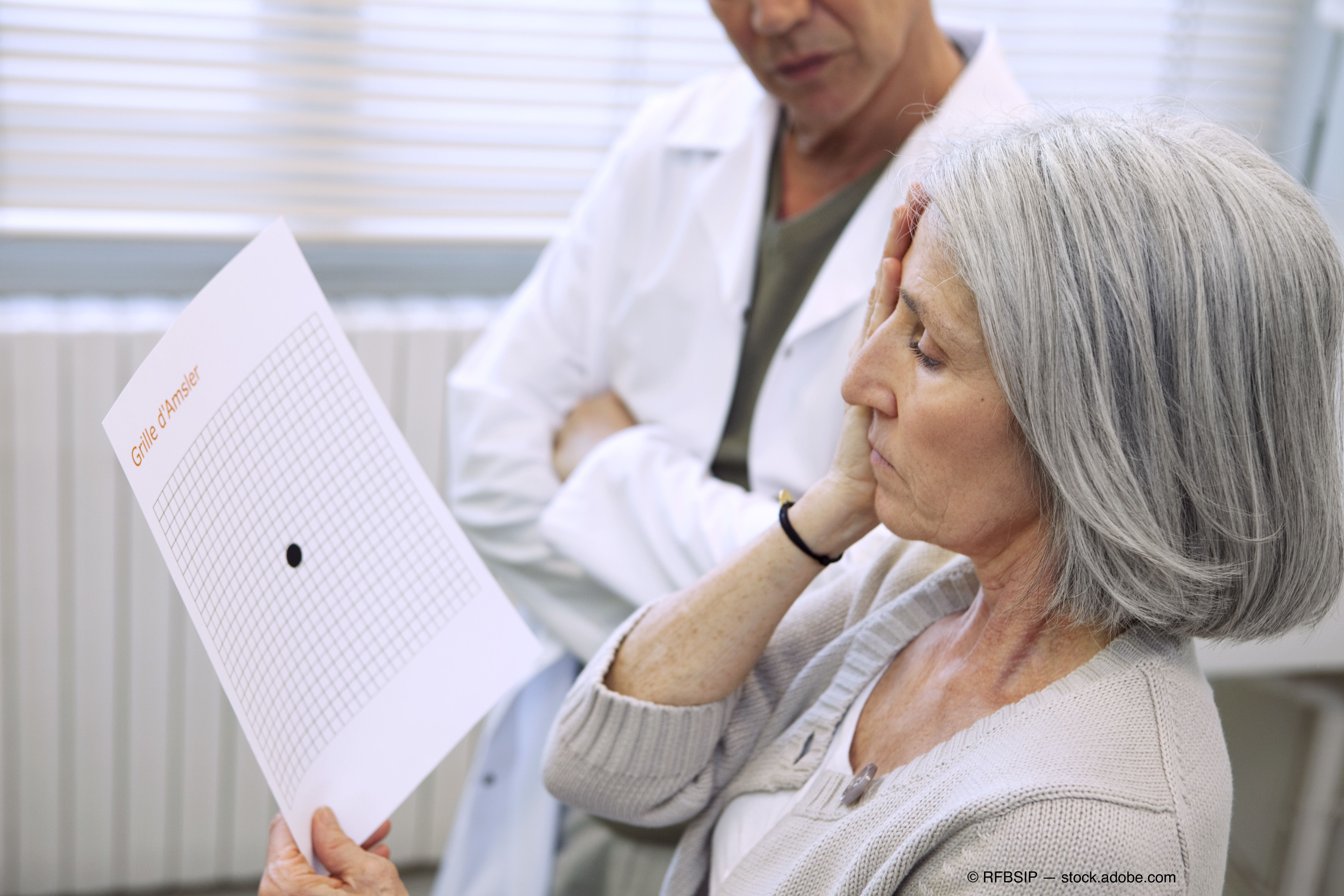Article
Digital home monitoring shows predictive value in disease progression for AMD patients
Author(s):
The 10-year retrospective ALOFT study details the importance of digital remote monitoring for patients diagnosed with age-related macular degeneration.
AMD, a leading cause of blindness in the developed world, is a progressive disease with two stages, dry and wet.

Notal Vision Inc. this week is reporting on the results of its Analysis of Long-term visual Outcomes of ForeseeHome Remote Telemonitoring (ALOFT) study.1
According to a news release, the 10-year retrospective study details the importance of digital remote monitoring for age-related macular degeneration (AMD) patients.1 The second report specifically focuses on early management and clinical research capabilities provided by home monitoring technologies.2
The company noted that AMD, a leading cause of blindness in the developed world, is a progressive disease with two stages, dry and wet. All patients begin in the dry stage and are usually able to keep their functional vision. About 10% to 15% of the patients convert to the vision threatening wet phase. These patients require frequent and expensive therapy, and many are unable to maintain their functional vision.
The company noted in its news release that the first published report of the ALOFT study demonstrated the importance of home monitoring in the early detection of conversion from dry to wet AMD, and consequently showed superior outcomes in long-term vision of patients who converted to wet AMD. The study analyzed data from more than 2000 patients over 10 years from five clinical sites.
As part of the Medicare covered home monitoring program, provided by Notal Vision Monitoring Center, patients tested with the device, which uses a functional test to detect structural changes, commonly associated with wet AMD, in the retina called preferential hyperacuity perimetry (PHP).
An intrinsic feature of the test detects changes in visual function, which prompts the Monitoring Center to alert the referring physician. The physician then determines if the alert was a conversion to wet AMD through a follow up exam using diagnostic imaging.
Researchers in the ALOFT study group further analyzed the data from patients who had alerts that did not result in an immediate wet AMD diagnosis. These patients were twice as likely than other dry AMD patients to convert over the same period. The finding was even more remarkable for patients who had wet AMD in one eye and dry in the other eye, also known as the “fellow eye”. They had a 44% chance of converting to wet AMD over the next two years.
“We placed an increased focus on patients who were seen after a ForeseeHome alert but at the time did not present with wet AMD,” says Allen C. Ho, MD, the report’s principal author, director of Retina Research of Wills Eye Hospital and professor of Ophthalmology at the Kimmel School of Medicine at Thomas Jefferson University. “In cases like these, patient management should include more frequent office visits given the elevated risk of conversion the home test indicates.”
Moreover, the release also noted that researchers pointed to the outstanding value of this information for clinical research. There has been great interest in prophylactic treatment for dry AMD patients before wet AMD conversion. However, to study this type of treatment efficacy, a group of patients at high risk of conversion needs to be identified. This is a significant challenge as only a small percentage of patients with dry AMD convert to wet in a given period. The predictive nature of alerts from the AI-enabled debivce can be invaluable for studying prophylactic treatments for AMD patients.
“Patients identified as high-risk by the ForeseeHome program may be the first to benefit from a prophylactic treatment once approved,” said Michael J. Elman, MD, co-author of the ALOFT study. “The sensitive functional home test may allow us to prevent wet AMD, rather than only treat it.”
According to the company, the Notal Vision Monitoring Center offers remote monitoring for qualified AMD patients. Working closing with their referring doctors, the monitoring center provides patients a comprehensive remote monitoring service that includes an AI-enabled, home-use device.
The news release noted that the services include insurance benefit verification, device provisioning, disease and device education, continuous compliance and data monitoring, and alert management on behalf of the referring doctor. While review is not required, the Monitoring Center also provides doctors with 24/7 access to a secure, web-based portal that provides clinically actionable insights for patient interactions and management.
“Predicting disease progression with the AI-based notifications our ForeseeHome remote monitoring service provides physicians has the potential to expand early management of age-related macular degeneration”, Kester Nahen, PhD, CEO of Notal Vision, said in the news release. “Our monitoring center’s advanced digital healthcare data analytics capabilities help us engage with pharmaceutical companies developing new treatment paradigms.”
References
- Mathai M, et al. Analysis of the Long-term Visual Outcomes of ForeseeHome Remote Telemonitoring: The ALOFT Study. Ophthalmol Retina. 2022 Apr 26:S2468-6530(22)00193-2. doi: 10.1016/j.oret.2022.04.016
- Ho AC, et al. The predictive value of false positive ForeseeHome alerts in the ALOFT study. Ophthalmo Retina. 2022. https://doi.org/10.1016/j.oret.2022.10.009
Newsletter
Don’t miss out—get Ophthalmology Times updates on the latest clinical advancements and expert interviews, straight to your inbox.





